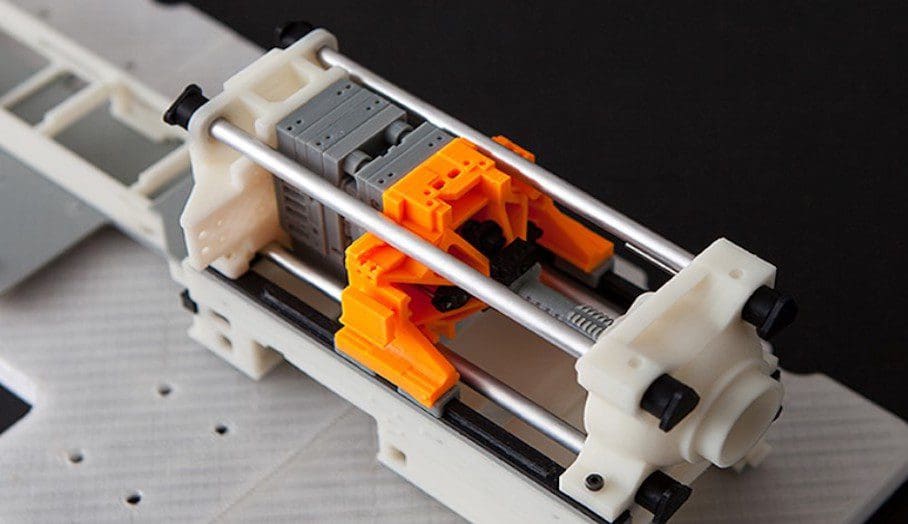3D printing has revolutionized the manufacturing industry by offering innovative solutions for various production processes. One such application is the creation of low-run injection molds using 3D printing technology. This article explores the benefits, factors to consider, top 3D printers for low-run injection molds, best practices, maintenance tips, and future trends in this field.


Benefits of 3D Printing Low-Run Injection Molds:
- 1. Cost-Effectiveness:
- – By using 3D printing to create low-run injection molds, manufacturers can significantly reduce costs compared to traditional mold-making methods.
- – The elimination of expensive tooling and machining processes makes 3D printing a cost-effective solution for small production runs.
- 2. Time Efficiency:
- – Traditional mold-making processes can be time-consuming, often taking weeks or even months to complete.
- – 3D printing allows for rapid mold production, reducing lead times and enabling faster product iterations.
- 3. Design Flexibility:
- – 3D printing offers unparalleled design freedom, allowing manufacturers to create complex geometries and intricate details that are difficult to achieve with traditional molds.
- – This flexibility enables designers to optimize part performance and functionality.
- 4.Iterative Prototyping:
- With 3D printed low-run injection molds, manufacturers can quickly iterate and refine their designs before committing to expensive production tooling.
- This iterative prototyping process helps identify and rectify design flaws early on, saving time and resources.
Factors to Consider when Using 3D Printed Low-Run Injection Molds:

- 1.Material Selection:
- Choosing the right material for 3D printed molds is crucial to ensure durability, heat resistance, and compatibility with the injection molding process.
- Factors such as temperature, chemical resistance, and mechanical properties should be considered when selecting materials.
- 2.Mold Design Considerations:
- Proper mold design is essential for successful injection molding.
- Design considerations include gate placement, draft angles, cooling channels, and venting to ensure optimal part quality and mold longevity.
- 3.Surface Finish and Texture:
- The surface finish of the mold directly affects the final part’s appearance.
- Post-processing techniques like polishing, sanding, or applying texture can enhance the mold’s surface finish and replicate desired textures on the molded parts.
- 4.Mold Lifespan:
- The lifespan of 3D printed low-run injection molds depends on various factors, including the material used, part complexity, and the number of molding cycles.
- Regular maintenance and inspection are necessary to prolong the mold’s lifespan.
Best Practices for 3D Printing Low-Run Injection Molds:

- 1.Design Optimization:
- Optimize the mold design for 3D printing, considering factors like support structures, part orientation, and wall thickness.
- Use design software tools to ensure the mold’s structural integrity and minimize the need for supports.
- 2.Proper Mold Preparation:
- Preparing the mold surface before printing is essential for achieving high-quality results.
- Clean the build plate, apply appropriate adhesion solutions, and ensure proper calibration for accurate prints.
- 3.Careful Material Selection:
- Select materials that are suitable for injection molding applications, considering factors like temperature resistance, durability, and ease of post-processing.
- 4.Post-Processing Techniques:
- Implement post-processing techniques like sanding, polishing, or chemical treatments to enhance the mold’s surface finish and remove any imperfections.
Maintenance Tips for 3D Printed Low-Run Injection Molds:

- 1.Cleaning and Storage:
- Regularly clean the molds after each use to remove any residual material or contaminants.
- Store the molds in a clean and dry environment to prevent damage.
- 2.Regular Inspection and Repair:
- Inspect the molds for wear, cracks, or other signs of damage regularly.
- Repair any minor damages promptly to avoid further deterioration.
- 3.Mold Release Agents:
- Apply appropriate mold release agents to ensure easy part ejection and prevent sticking or deformation.
- 4.Temperature and Humidity Control:
- Maintain suitable temperature and humidity levels in the production environment to avoid dimensional changes or warping of the molds.
Future Trends in 3D Printing Low-Run Injection Molds:




- 1.Advancements in Materials:
- Continued development of new materials with improved mechanical properties, heat resistance, and compatibility with injection molding processes.
- 2.Increased Precision and Accuracy:
- Advancements in 3D printing technologies will lead to higher precision and accuracy in producing low-run injection molds, resulting in better part quality.
- 3.Integration of AI and Automation:
- The integration of artificial intelligence and automation in the 3D printing process will streamline mold production, reduce errors, and enhance overall efficiency.
3D printing low-run injection molds offers numerous benefits, including cost-effectiveness, time efficiency, design flexibility, and iterative prototyping. By considering factors such as material selection, mold design, surface finish, and maintenance, manufacturers can maximize the advantages of this technology. As advancements continue, the future of 3D printing low-run injection molds looks promising, with improved materials, precision, and automation.
